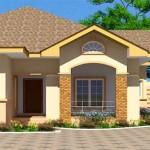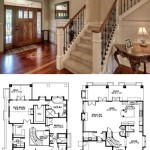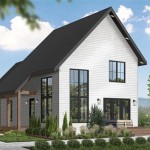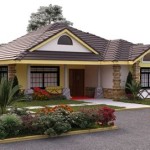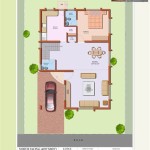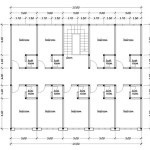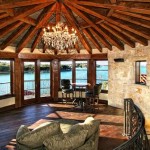House Plans for Narrow Lots: Optimizing Space and Style
The increasing density of urban and suburban areas has led to a greater demand for housing solutions that can effectively utilize narrow lots. These lots, often characterized by limited width but potentially significant depth, present unique architectural challenges and opportunities. Developing house plans for narrow lots requires careful consideration of spatial optimization, natural light utilization, structural integrity, and aesthetic appeal. This article will explore key considerations and design principles for creating functional and stylish homes on narrow lots.
Understanding the Challenges of Narrow Lot Construction
Narrow lots present specific limitations that require innovative design solutions. The primary challenge is maximizing usable living space while adhering to setback regulations and maintaining comfortable circulation patterns. Setback regulations, which dictate the minimum distance a building must be from property lines, can severely restrict the building envelope, making it difficult to achieve desired square footage.
Additionally, narrow lots often pose challenges related to natural light penetration. With neighboring buildings potentially close by, it can be difficult to introduce adequate natural light into all rooms, leading to dark and potentially uninviting interior spaces. Ventilation can also be compromised, requiring careful planning of window placement and mechanical systems.
Construction on narrow lots can also be more complex and costly. Limited access for construction equipment and materials can increase labor costs and project timelines. Furthermore, foundation design must be carefully engineered to ensure structural stability, especially in areas with problematic soil conditions. Addressing these challenges requires a strategic and well-informed approach to house plan development.
Key Design Strategies for Narrow Lot House Plans
Several design strategies can be employed to mitigate the challenges associated with narrow lot construction and create functional and attractive homes. These strategies focus on optimizing space, maximizing natural light, and addressing structural considerations.
Vertical Expansion: One of the most effective ways to maximize living space on a narrow lot is to build vertically. Multi-story designs allow for a greater square footage without expanding the building’s footprint. Vertical expansion can also enhance views and create opportunities for rooftop terraces or decks.
Open Floor Plans: Open floor plans are particularly well-suited for narrow lots as they create a sense of spaciousness and improve circulation. By eliminating or minimizing interior walls, light can flow more freely throughout the house, creating a brighter and more inviting atmosphere. Open floor plans allow for flexible use of space and can be easily adapted to changing needs.
Strategic Window Placement: Maximizing natural light is crucial in narrow lot homes. Careful consideration should be given to the placement and size of windows. Tall, narrow windows, strategically positioned to capture available light, can brighten interior spaces without compromising privacy. Skylights and light wells can also be used to introduce natural light into areas that are otherwise difficult to illuminate.
Efficient Use of Space: Every square foot counts in a narrow lot home. Efficient use of space is essential to maximizing functionality. Built-in storage solutions, such as bookshelves, cabinets, and window seats, can help to minimize clutter and create more usable living space. Multi-functional rooms, such as a home office that can double as a guest room, can also help to optimize space.
Outdoor Integration: Integrating outdoor spaces into the overall design can significantly enhance the quality of life in a narrow lot home. Decks, patios, and balconies can provide valuable outdoor living space and create a connection with nature. Vertical gardens and green walls can also be incorporated to add greenery and improve air quality.
Consideration of Adjacencies: Due to the proximity of neighbouring lot lines, careful consideration must be given to the adjacency of living spaces. Windows should be carefully positioned to preserve privacy. Noise transmission can also be a factor, so soundproofing measures may be necessary. If possible, orienting bedrooms away from the neighbouring house may further minimize noise issues.
Structural Considerations and Material Choices
Beyond space planning and aesthetics, structural considerations are paramount in narrow lot house plans. Foundation design, wall construction, and roof design must be carefully engineered to ensure the stability and longevity of the building.
Foundation Design: The foundation is the backbone of any building, and its design is particularly critical in narrow lot construction. Soil conditions, groundwater levels, and seismic activity must be carefully considered when designing the foundation. Common foundation types for narrow lots include slab-on-grade foundations, crawl space foundations, and basement foundations. The choice of foundation type will depend on the specific site conditions and the design requirements of the house.
Wall Construction: The choice of wall construction materials can have a significant impact on the cost, energy efficiency, and aesthetics of a narrow lot home. Common wall construction materials include wood framing, steel framing, and masonry. Wood framing is a cost-effective and versatile option, while steel framing offers superior strength and durability. Masonry walls, such as brick or concrete block, provide excellent thermal mass and sound insulation.
Roof Design: The roof design can also play a significant role in the overall aesthetics and functionality of a narrow lot home. Gable roofs and hip roofs are common choices, offering a balance of cost-effectiveness and aesthetic appeal. Flat roofs can also be used, particularly in modern designs, and can provide an opportunity for rooftop decks or green roofs. The roof should be designed to effectively shed water and snow and to withstand wind loads.
Durable Materials: Selecting durable and low-maintenance materials is important for narrow lot homes, which may be subject to increased exposure to the elements due to their proximity to neighboring buildings. Materials such as fiber cement siding, brick, and metal roofing offer excellent durability and require minimal maintenance. These materials can also enhance the aesthetic appeal of the house and increase its long-term value.
Sustainable Materials: Environmentally conscious homeowners may also consider using sustainable materials in their narrow lot home. Recycled content materials, such as recycled glass countertops and reclaimed wood flooring, can reduce the environmental impact of the building. Energy-efficient windows and insulation can also help to reduce energy consumption and lower utility bills.
Addressing Site Specific Challenges: Each narrow lot presents its own specific challenges. A thorough site analysis is crucial to identify potential problems such as drainage issues, soil instability, or existing utilities. These challenges must be addressed in the house plan to ensure the long-term stability and functionality of the building.
Working with Professionals: Given the complexities involved in narrow lot construction, it is highly recommended to work with experienced architects, engineers, and contractors. These professionals can provide valuable insights and guidance throughout the design and construction process, ensuring that the house plan is both functional and structurally sound. Collaborative communication between all parties is essential for a successful project.
Cost Considerations: The cost of building a house on a narrow lot can vary significantly depending on the complexity of the design, the choice of materials, and the location of the lot. It is important to develop a realistic budget and to carefully consider the cost implications of different design choices. Value engineering, which involves identifying cost-saving measures without compromising quality or functionality, can be a valuable tool in managing project costs.
Designing house plans for narrow lots requires a creative and strategic approach. By understanding the challenges and employing innovative design solutions, it is possible to create functional, stylish, and sustainable homes that maximize the potential of these unique properties. The emphasis on vertical expansion, open floor plans, strategic window placement, and efficient use of space are key considerations for successful narrow lot construction. Careful selection of materials and the use of durable and environmentally friendly products will enhance the longevity and sustainability of the build.
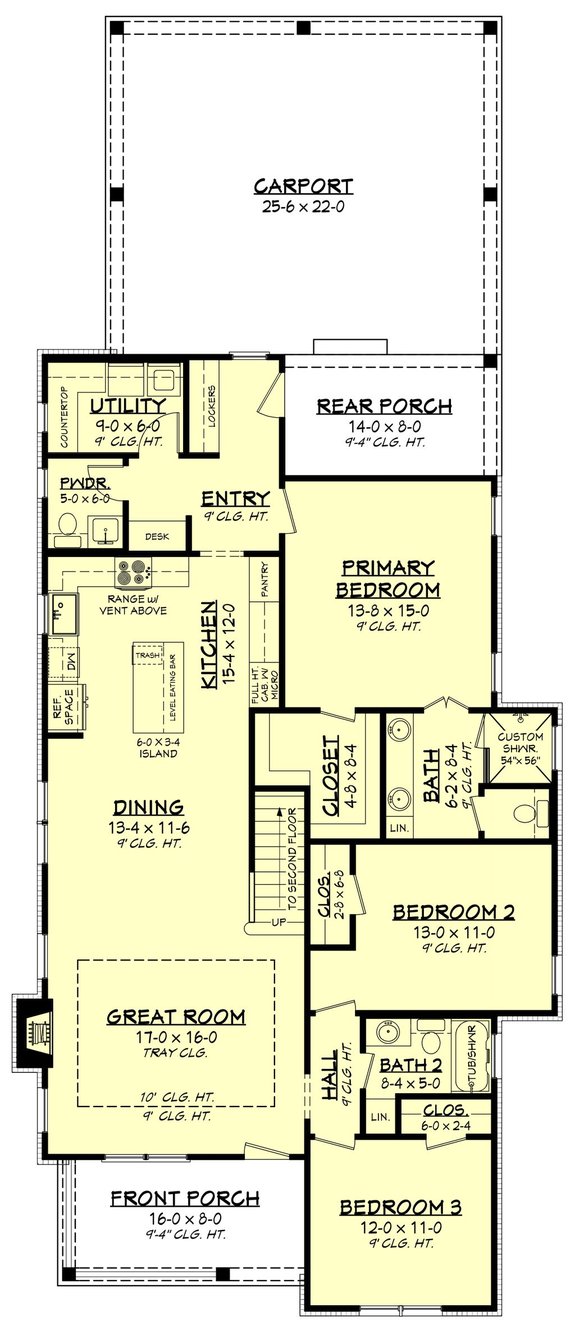
Simple Narrow Lot House Plans Houseplans Blog Com

Casa De 1 Andar Com 3 Quartos Narrow House Plans Lot

Narrow Lot Ranch House Plan 22526dr Architectural Designs Plans Narrowmasterbathro Rectangle

Budget Friendly Narrow Lot House Plan

Narrow Lot Plans For A Ina Style Coastal House

Simple Narrow Lot House Plans Houseplans Blog Com
House Plan Of The Week Narrow And Luxurious Builder

Plan 42823mj Narrow Lot Mediterranean House In 2024 Plans

Elegant House Plan For Narrow Lot 36419tx Architectural Designs Plans

Plan 056h 0005 The House

